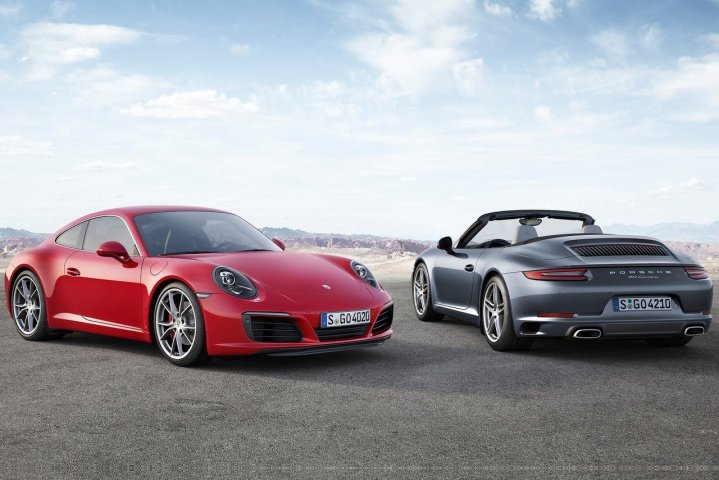
Porsche has released a new video highlighting the rear axle steering system of the new 911 Carrera. For those of you “in the know,” Porsche’s rear-wheel steering technology is nothing new. However, it has been reserved for the highest performance versions (the GT3 and Turbo) of its 911 until now.
For 2016, Porsche offers the system on all 911 Carrera S models at each customer’s request. The German automaker states that the technology “enhances performance and everyday practicality in equal measure.”
The simple breakdown of the system is as follows: At low speeds (up to 31 mph), the rear wheels steer in opposing direction to the front wheels, which means easier maneuvering, parking, etc. At higher speeds (above 50 mph), the rear wheels steer in the same direction as the front wheels, resulting in a “virtual wheelbase extension” and increased stability. You might be asking what happens between 31 and 50 mph. According to Porsche, the car basically makes up its own mind within that speed window.
The system consists of two electromechanical actuators fitted on the rear axle instead of the conventional tie rod. This setup steers the rear wheels up to 2.8 degrees in the same or opposite direction as the steering angle on the front axle.
It might surprise some that four-wheel steering has been applied on production sports cars since the late 1980s. Honda led a wave of Japanese automakers that introduced the system on certain models. Due to engineering difficulties, the systems didn’t last long, but Porsche and Acura have been using the technology for the past couple years. Thanks to advances in technology, Porsche claims drivers won’t be able to notice the system in action.
There’s a fair chance this technology will work its way into lesser Porsche models in the near future. The next generations of Porsche’s Boxster and Cayman will likely adopt the mechanics on high performance models first, just as Porsche’s 911 Turbo and GT3 did before moving down to regular Carrera’s.


